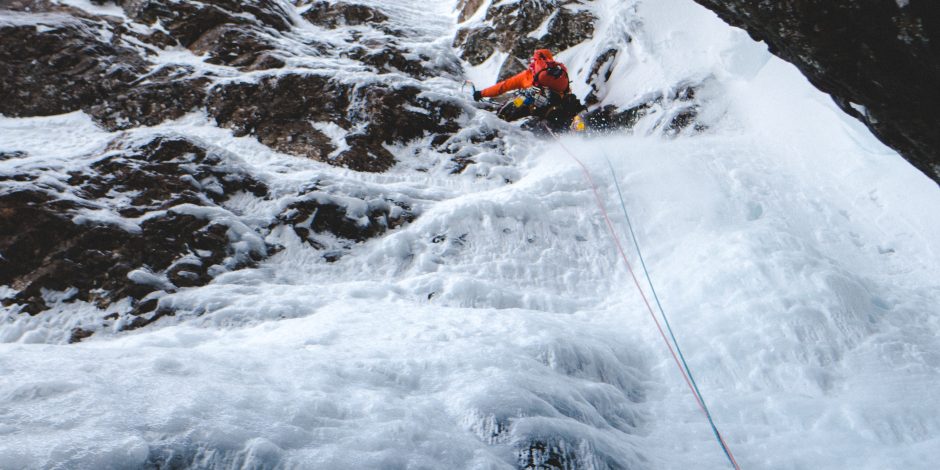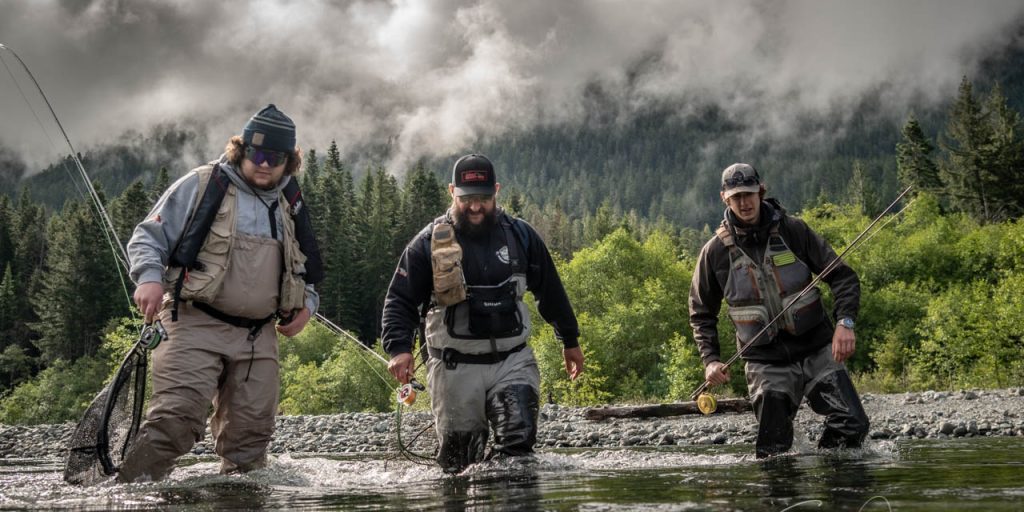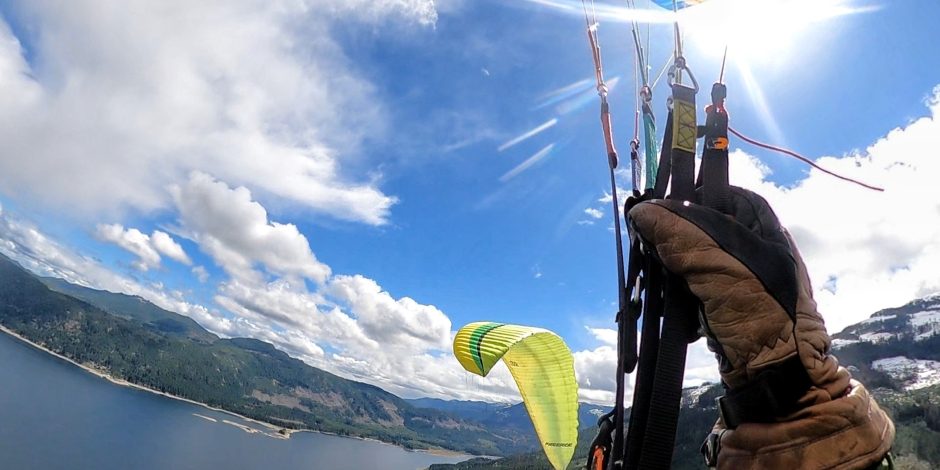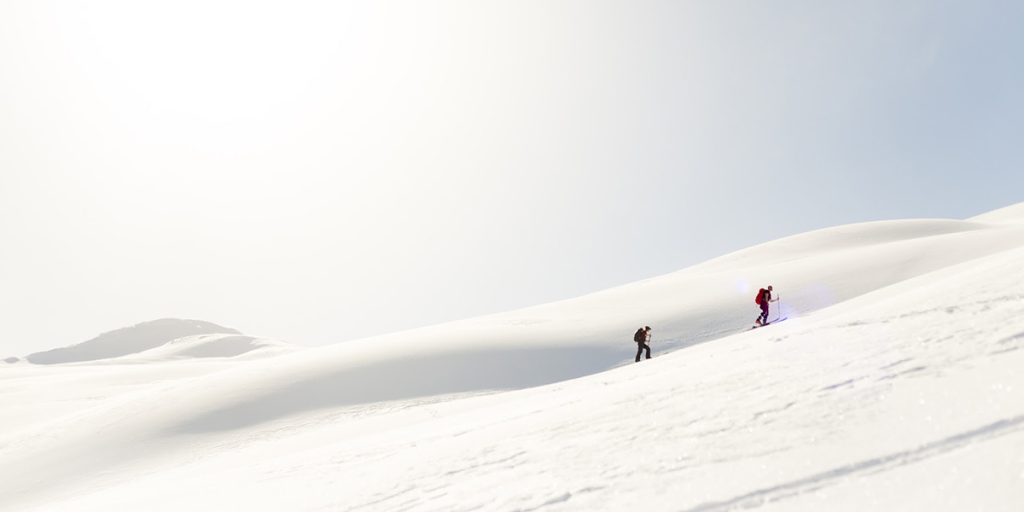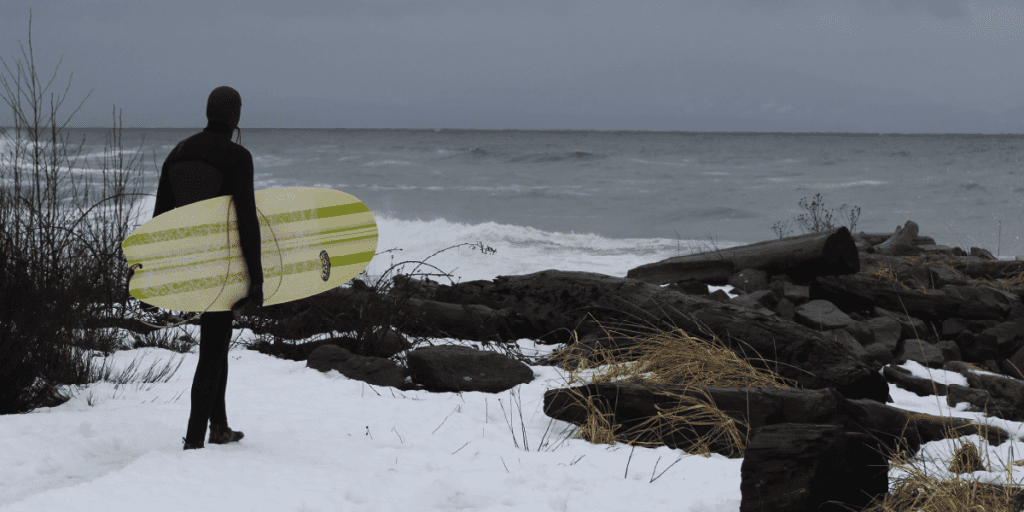As I look down at my crampons kicked solidly into the thin ice, I feel the exposure of being hundreds of metres off the ground. My mind says, “Why are you up here again? Your last ice screw is five metres below you in questionable ice.”
Then I take a deep breath. “Max, you got this. You’re in your zone. Breathe and climb.” Soon I’m at a good stance where I build an anchor, tie myself into it, and yell, “Belay off!”
Winter climbing is a unique activity. You’re often cold, days are short, things freeze, it’s hard to use your hands, and you can’t feel your toes. Ice and snow can come flying down at you, and you have a bunch of sharp things attached to you.
As I belay my climbing partners, I look up at what is next for us: a steep section of ice that appears to change to a snow ramp higher up. Above that, it is hard to tell. When we looked at the route through the binoculars, we were sure it was climbable, but that was from hundreds of metres away. Now that we’re in the thick of the climb, we find it hard to know what’s next.
We continue to move through the steep, iced-up gulley, climbing snow ramps to steep ice, each providing their own challenges. As we get higher, a steeper and more complex section presents itself, so we pause to assess it. We’re going to have to scratch up this section. That means using ice tools and crampons on rock. It’s known as mixed climbing, and it’s most fun when you can place good protection. Above us, things don’t look great. Maybe we don’t have the conditions that we thought we had. As these things run through my mind, I look at my partners. Their eyes seem to say similar things. Regardless, we push on. That’s what ice climbers do.
As we get closer to the snow-covered rock, we discover that the path is steeper and even more complex than we thought. Maybe our judgment has been clouded by the exertion of the 700 metres of climbing we have just done. We chat, and we hum and haw for a while as we stare up at the crux of the route.
We have climbed some technically challenging and run-out pitches below but this seems like another step up, a step that is too big for us today. We decide to turn back and go down.
Because we don’t have much daylight left, we stop partway down and dig a snow cave to camp for the night. Once we are cuddled into the cave, we begin to second-guess: “Maybe we should have given that pitch a proper attempt.”
But the cautious response is obvious: “The gear looked completely inadequate.”
Then the risk-taker’s voice: “You gave up. You should have at least gone for it.” As I collect my thoughts and try to chill my ego, I have mixed emotions, but ultimately, I’m confident we made the right call this time around. In any season, an injury in the mountains can be fatal; in winter, any injury, no matter how minor, can be severe.
The next day we stumble to the cars—humbled, tired, yet happy. The climb we attempted is still out there for someone … maybe it will be us one of these winters or maybe it will have to wait for the next generation who will be bolder and more skillful then we were yesterday.
Naturally, that next generation, like us, will love being cold, getting hit with snow and ice, climbing against the winter sun on short days, not feeling their fingers and toes, eating frozen bars, and spending days and nights shivering on mountainsides.
Here’s to winter climbing and to the suffering, crossed with enjoyment, that comes with it.

